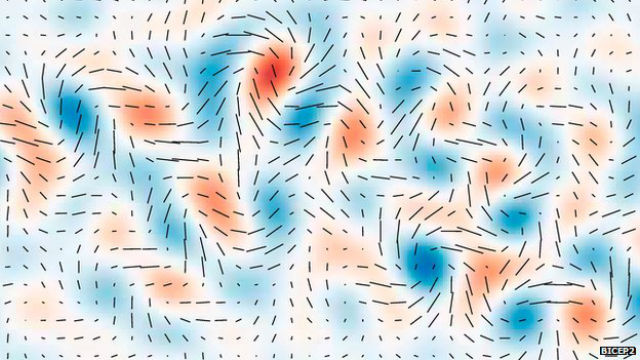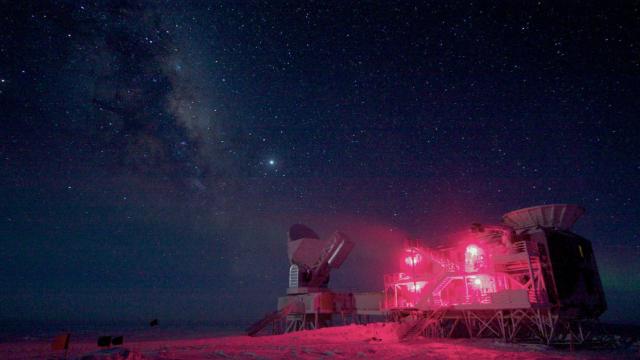Astronomers have long sought tangible proof that the Big Bang caused the universe to violently and exponentially expand in the first few milliseconds of its existence. Now they have it , thanks in part to a radio telescope in Antarctica that recently detected primordial gravitational waves, the “smoking gun” evidence of the Big Bang. This changes everything .
These gravitational waves continued to ripple throughout the ever-expanding universe for another 380,000 years after the Big Bang — some 13.8 billion years ago — far before the cosmic plasma had cooled into matter. Today, they can still be seen in the cosmic microwave background (CMB) that permeates the universe, provided you look deep enough into the cosmos to see them. And that’s exactly what Harvard University’s BICEP 2 (Background Imaging of Cosmic Extragalactic Polarization) radio telescope array in Antarctica did. Composed of of 512 individual telescopes connected in parallel to form a single, large aperture array, the BICEP 2 system detected the B-modes polarization of the CMB (basically a distinctive twist) that had long been theorized by cosmologists.

“Our team hunted for a special type of polarization called ‘B-modes,’ which represents a twisting or ‘curl’ pattern in the polarised orientations of the ancient light,” BICEP2 co-leader Jamie Bock, a professor of physics at Caltech and NASA’s Jet Propulsion Laboratory (JPL) said in a press statement. These distinctive modes are created when gravitational waves squeeze space as they pass, curling the light.
This was no easy feat. To detect this polarization, the BICEP 2 system had to measure and analyse temperature differences in the CMB with an accuracy of one ten-millionth of a kelvin, so as not to confound its findings with the effects of other galacatic phenomena such as gravitational lensing and galactic dust clouds that can twist light as it passes by.
The implications of this discovery are immense . For one, it finally proves that gravity is a quantum-based phenomenon — given that inflation, itself a quantum phenomenon, produced gravitational waves — just like the rest of the fundamental forces of the universe. Also, proof that inflation exists lends credence to the existence of gravitational waves themselves, a vital component of Einstein’s theory of relativity that has never been directly observed.
“This is spectacular,” Prof Marc Kamionkowski of Johns Hopkins University told BBC News. “I’ve seen the research; the arguments are persuasive, and the scientists involved are among the most careful and conservative people I know.” The research will of course be stringently peer reviewed, but talk of Nobels have already begun to fly after yesterday’s press conference. Let’s hope they save one for BICEP 2. [Nature – Wiki 1, 2 – Harvard – BBC – Stanford]
image:Keith Vanderlinde, National Science Foundation
